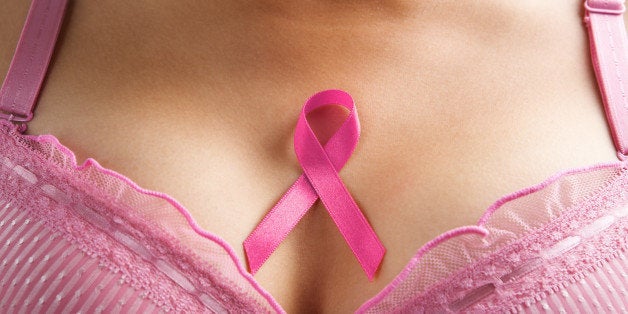
October is Breast Cancer Awareness Month, but for me, breast cancer is on my mind every month of the year. At age 29, I have just come out of 10 months of intense treatment for an aggressive, non-genetic and more-than-unexpected cancer.
Growing up, I was always told that I had fibrocystic breast syndrome or, as I called it, "lumpy boobs," and I had essentially decided that checking for breast lumps was futile. I was told by my gynecologist and others, they could not tell what was what, so how could I? When I found a lump in my right armpit around Thanksgiving last year, I reluctantly, at the advice of my physician, made an appointment with a radiologist. After being in their office for four hours, I was suddenly spurned out into the churning, frenetic nature of Manhattan with beguiling news. I had cancer. And pretty bad, too.
In the midst of all I was dealing with cancer-wise, one thing I was unable to do was locate my cancer community. That is not to say that it did not exist, but two problems stood in my way of finding it. The first was my age. As the brilliant columnist Suleika Jaouad has articulated in her weekly column on cancer for the New York Times, those of us with cancer in our 20's are just a rare bunch with a unique situation -- everyone is maxing out on life in the apex of health. We are strange anomalies dealing with, to be frank, everyone's worst nightmare.
But a paramount reason I think I was unable to connect to a community of cancer patients was that my particular cancer, breast cancer, has seemingly been taken over by a logo and a color and a marketing scheme, all of which with I have been unable to identify. I am, of course, referring to the pink ribbon. This symbol, for all the money it has raised, has for me very little meaning and, in fact, feels contrary to a representation of what I have been through.
Pink, the supposed color of femininity, does not represent breast cancer to me. In fact, after losing my hair in six rounds of chemo, going through menopause at 28, being sick as a dog and having both of my breasts removed, I pretty much feel less feminine than ever.
Breast cancer, like any other cancer, is a gnarly and wicked disease. Its treatments are arduous and painful, long and intense. They are invasive and, at times, humiliating. To take this disease and cover it in pink glitter gives it a bubble gum appeal that, to me, does not raise awareness, but rather makes opaque and glamourizes the difficulties those of us with this cancer have faced. It also allows people to believe they are actually doing something and are helping and are informed when, in fact, they have simply peeled back a pink yogurt lid, bought a bag of pink-ribbon-stamped cookies or even a pink bucket of fried chicken.
"Pinkwashing" gives corporations the opportunity to look charitable while simultaneously allowing consumers to think they have contributed to a cause. While these fractions of percentages of donations have added up and I am incredibly grateful for their contributions, they seem to be utilized as a means for self-congratulation and marketing hooks rather than a truly greater good. It allows these corporations to look charitable and good by doing very little, thus leaving the gravity of these problems unclear and the change minimal. Also, when consumers of such pinked products believe that in buying such things, they are already aware of something via these channels, they then do not feel the need to actually educate themselves via more constructive modes (for example, about self-screening).
Why has my cancer been co-opted by these tactics? And, more importantly, why has it moved into every aspect of breast cancer, including support groups, fundraising and celebrations? There are now pink ribbons, pink colors and the word "pink" on everything breast cancer-related. Further, does this symbol not lose its meaning when a pink ribbon-clad product can be chock-full of carcinogens?
For me, the pink ribbon and pink have been alienating and confusing. And I am not the only one that feels this way. This year, Breast Cancer Action, an organization based in San Francisco, has launched a "Think Before You Pink" campaign to try to change the conversation around breast cancer -- to recognize that this is an epidemic and a health crisis in need of more than just a ribbon.
When I see organizations and events called "Tickle Me Pink," for example, with pink celebrities and pink cocktails, I fail to see the connection to what I have been through. I am not by any means asking everyone to go sit in a chemo ward. I am simply asking those of us in this breast cancer community to perhaps consider new modes of symbolizing our struggle while getting folks aware of how to prevent and understand this disease in a way that is not fixated on traditional gender roles and femininity.
In recent months, I have indeed found a need to talk to others about my struggle, but I have tapped into more general cancer communities, connecting with young people with cancer rather than breast cancer organizations. I simply feel better talking about my cancer without all the pink flair.
RELATED ON HUFFPOST:
